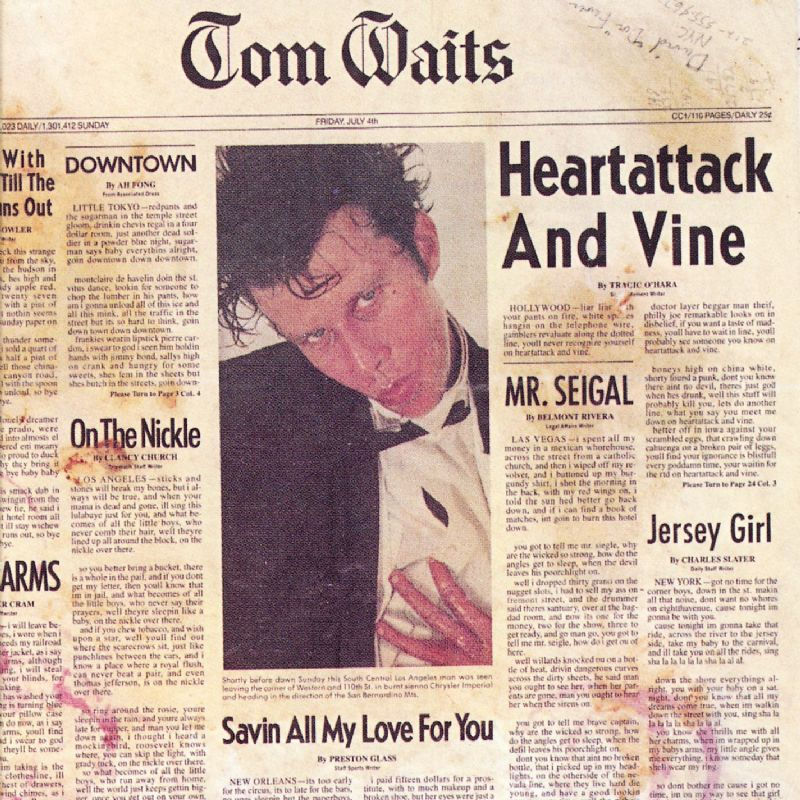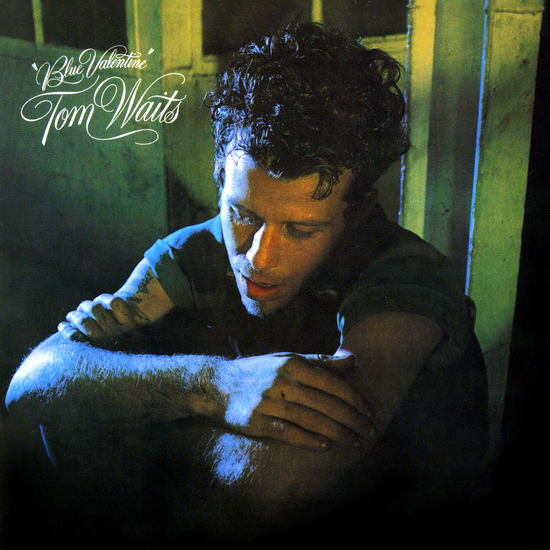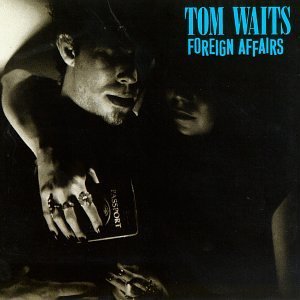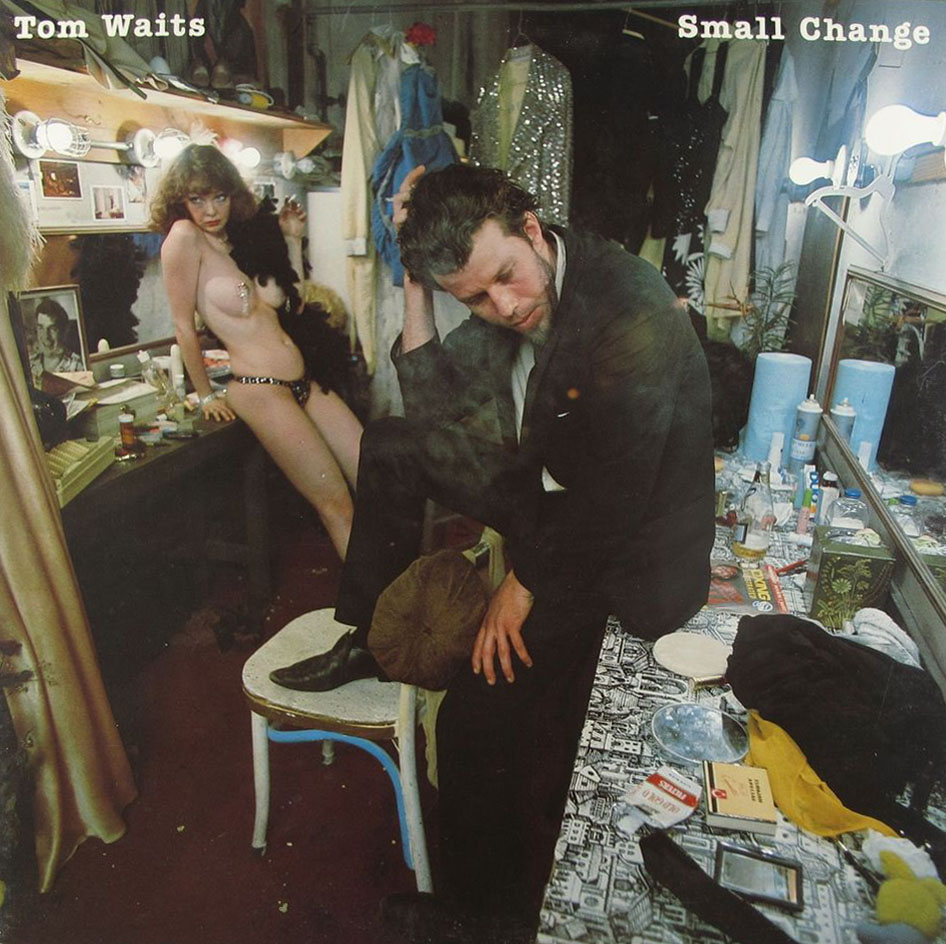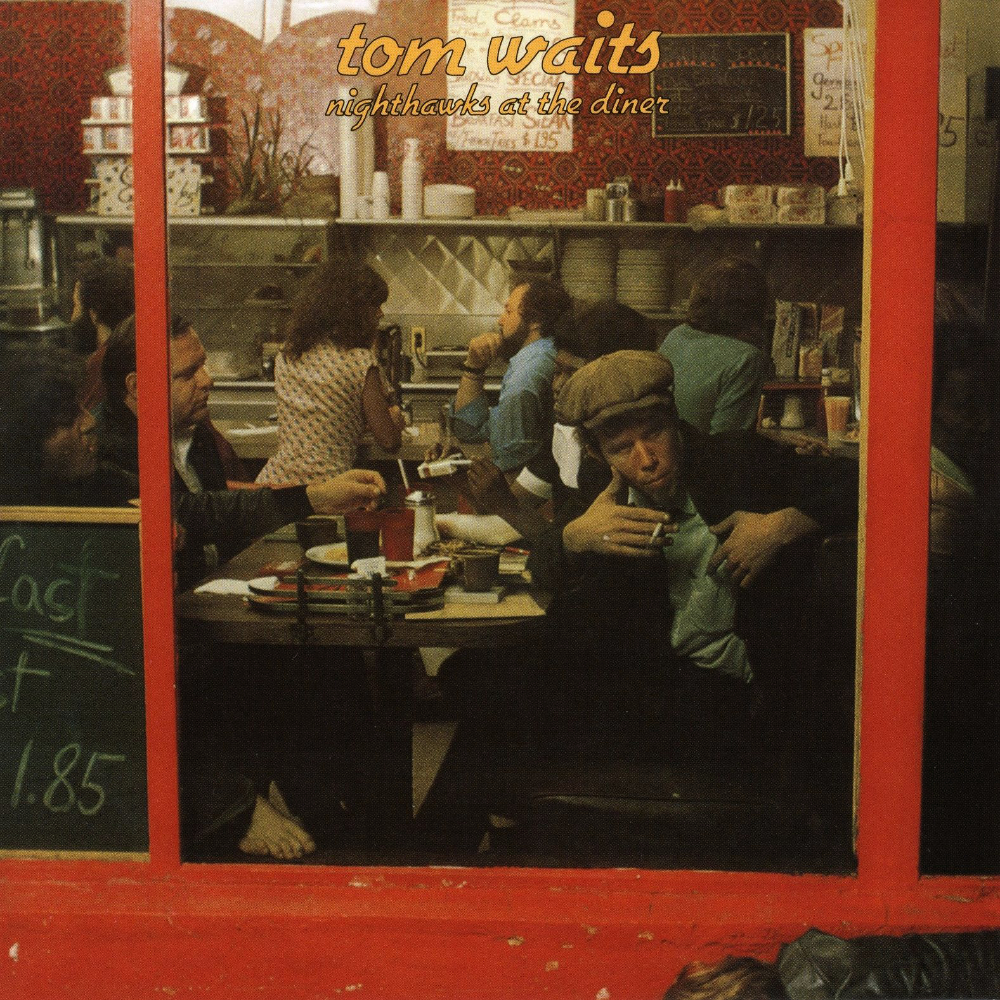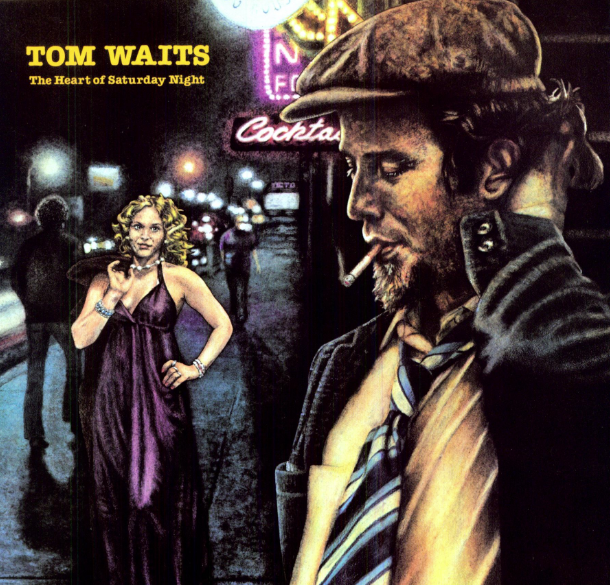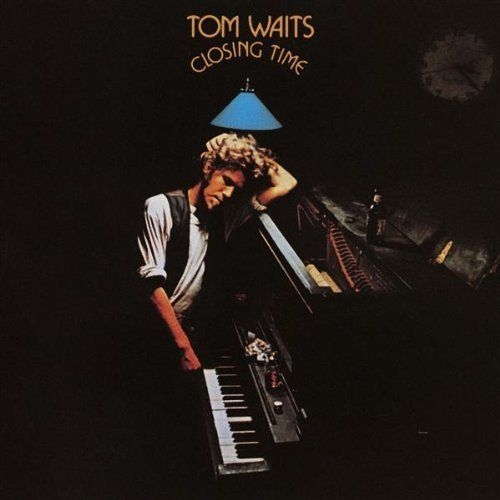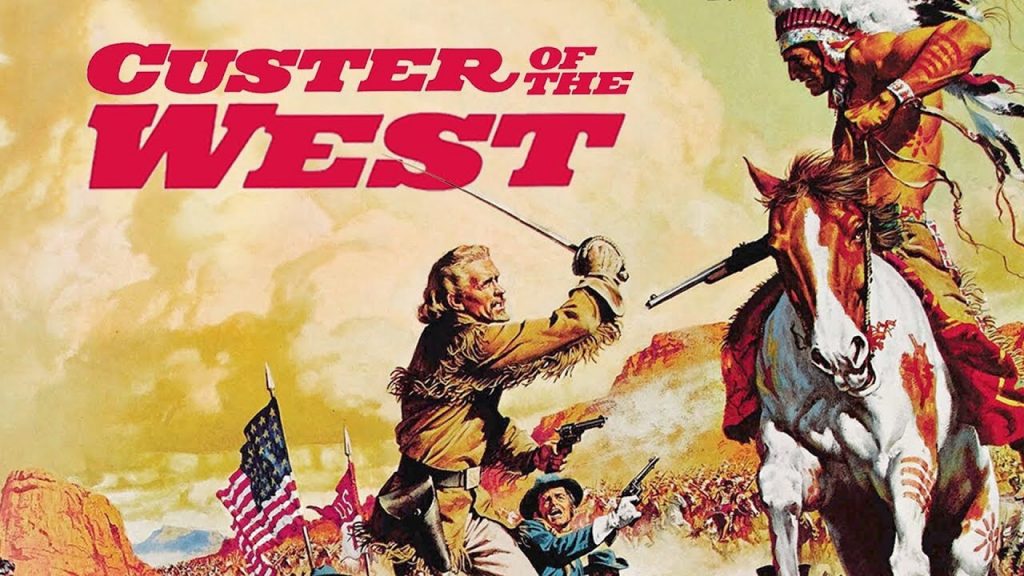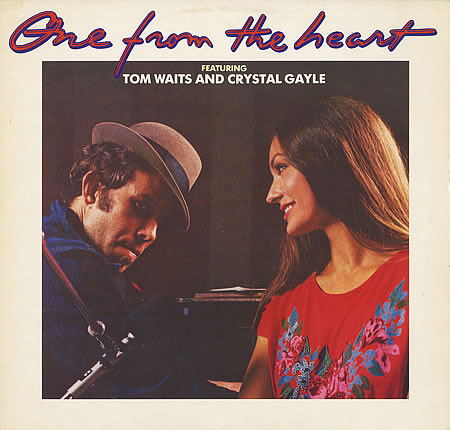

The music Waits made for One From The Heart is amongst his best. It’s also interesting as a strangely anachronistic coda to his first decade of music making: already moving away from the sweeter, jazzier side of his muse towards the grittier end of town, with albums like Blue Valentine and Heartattack And Vine , OFTH is a slight return to his lush melodic style. After this Swordfishtrombones ushered in (quite literally: if you’ve ever seen the Waits concert movie Big Time you’ll know what I mean [link is to the album associated with the currently unavailable movie]) the character that he’s subsequently become, and remains to to this day: the slightly unhinged, semi-apocalyptic ‘mule’, growing more ornery and experimental as he ages, ever the exception to the norm!
We’ve Francis Ford Coppola to thank for this album. Copploa decided to make a movie based around a couple’s troubled romance, basing the storyline on Greek Myth, but setting it in a totally synthetic studio Vegas, to be expressly built around Waits’ songs. Coppola’s movie goes for a feature length celluloid embodiment of the atmosphere created on Waits’ track ‘I Never Talk To Strangers’, from Foreign Affairs (Coppola’s son had introduced him to Waits via this song/album). A duet with Bette Midler, it portrays a humorously engaging barfly chat-up scenario. Coppola and Waits had hoped to get Midler for OFTH, but other commitments meant she couldn’t do it. Instead of Midler, Waits worked with country singer Crystal Gayle, and OFTH is actually a better realisation of the concept. Strange as it was on paper – Gayle epitomising homely, clean cut country, Waits the dissolute boho – the pairing works, exceptionally well. Gayle has, at least to my ears, a much nicer/better voice than Midler.
Whilst the album’s a complete triumph, the film certainly wasn’t: an awkward, oddball affair, with the air of a strange claustrophobic dream, it was box office flop, ending an era for Coppola, and independent Hollywood studios. Coppola’s Zoetrope studios, already reeling from the fall-out of Apocalypse Now , was bankrupted by it: costing $26 million, the film bombed, netting just over a paltry half million dollars, forcing Coppola to sell off his enormous (23 acre!) studio.
Another fascinating aspect of this recording is that, in the making of it, Coppola gave Waits the chance to finally live out one of his musical dreams: in songs like ‘Muriel’ and ‘Foreign Affairs’ he’d already begun to achieve a very high standard of jazz-influenced Tin Pan Alley styled songsmithery, a side of his musical character that’d always been present, growing stronger and more assured with each album. Now, with his own office, complete with piano, typewriter, etc., he could live out that Brill Building fantasy, finally ‘going to work’ as a writer and composer. And boy did he deliver! It was in livng out this fantasy that he met, and then married, Kathleen Brennan. Truly a dream job!
So, to the music: this was the last time that Waits worked with ‘Bones’ Howe, and the crew of legendary jazz cats that had helped him wax some awesome music over the last several years/albums, including such luminaries of the west coast jazz scene as Shelly Manne, Jim Hughart, Jack Sheldon, Teddy Edwards and Victor Feldman. These sessions added other such illustrious names as Larry Bunker, Pete Jolly and Dennis Budimir to the roster of top drawer jazzers that helped Waits work his mojo. Many of these great musicians, and producer ‘Bones’ Howe, would find this was the last time Tom called on their services, as he moved off into newer, stranger territory. So this is a remarkable document; an apotheosis of Waits as crafter of gently sentimental jazzy ballads. And, thanks to the Coppola dollars, it’s a monumental no-expense-spared production.
As with Foreign Affairs, the music begins with a kind of introductory suite, or ‘opening montage’, as the track has it. A beautifully sentimental portion of the track ‘I Beg Your Pardon Dear’ precedes the sound of a spinning coin, and then we’re treated to ‘Once Upon A Town/The Wages Of Love’, the former a dreamy piano duet with Gayle that opens onto a vista of lush strings, before the Vegas swing of the latter smoothly sashays across your speakers. Waits is both a musical and lyrical alchemist, with the Midas touch, turning all these musical elements, thanks in no small part to the stellar cast of supporting musicians, into pure gold. The tune ends with the sound of punters in a slot machine paradise, ringing off their jackpots. And this is just track one; already an embarrassment of riches.
I won’t detail all the album, but there are Tom tracks, Crystal tracks, and more duets, and they’re all fabulous. From Gayle we get such gems as the gently sexy, serpentine melodies of ‘Is There Any Way Out Of This Dream?’, or the unbelievably rich guitar work of Dennis Budimir on the fabulously melancholy ‘Old Boyfriends’ (Budimir’s guitar initially sounds almost like a Fender Rhodes; the tone is rich, thick, and warm, and he turns Waits’ chords into a stunning jazz torch song), with Gayle milking the notes like a proper siren. Waits is rumpled and earnest on the piano driven ‘Broken Bicycles’, and schmoozily contrite on ‘I Beg Your Pardon Dear’, in which he delivers the wonderful line “you are the landscape of my dreams”. The arrangements are phenomenal, with the supporting musicians helping create magical musical dreamscapes that vividly brings Waits’ words to life.
‘Little Boy Blue’ is interesting in that it might be possible to see it as presaging the change Waits was about to undergo, and it even has sonic similarities – the heavy, thick sound of the Hammond organ as the main backing in particular – with the track ‘Frank Wild Years’ from Swordfishtrombones, whilst ‘The Tango’ section of the ‘instrumental montage’ (originally starting side two of the album) is like a less wayward version of SFTB’s ‘Dave The Butcher’, both sharing a somewhat drunken overemphasis of their rhythms. But whereas on SFTB things get quite dark, and a bit ‘carnival freak show’, on OFTH, proceedings are decidedly mellower, and more gentle. Waits’ wife Kathleen would late characterise his music as broadly falling into two categories, ‘grand weepers, and grim reapers’. Of the two sides of the Waits muse, this is unabashedly on the grand weepers side, and wonderfully rich and tender it is too.
Shelly Manne coaxes more magic from the tymps on the upright bass driven number, ‘You Can’t Unring A Bell’, which comes as close to Waits’ spoken word recitations as anything gets on this album. The tile track is a richly syrupy affair, drenched in strings, the piano harp-like in its glassy delicacy, and Jack Sheldon’s soft breathy tone out-mellowing the legendary Chet Baker. Edwards sax is also wonderfully and softly breathy, and Gayle Levant’s harp supplies terrific shimmering glissandos. Gayle ends the vocal selections with the rapprochement of ‘Take Me Home’; the musical movie has a happy ending, wrapped up by the twinkling litle instrumental ‘Presents’. Wow, pure musical magic! Absolutely flawless, and utterly esential for the discerning listener.
The CD I own (their are numerous versions of this recording) adds two bonus tracks: ‘Candy Apple Red’, a track not on the official release, which is a very nice minimal piece, with Tom on piano, accompanied only by upright bass and trumpet, and a version of ‘Once Upon A Town’ that has a different treatment, starting off differently, and ending by segueing into another piece not on the official album, called ‘Empty Packets’. The latter is very nice too, reminiscent of some of the music Waits had contributed to Sylvester Stallone’s Paradise Alley [DVD ] movie. Always a lover of language, in all its rich guises, which helps explain why he’s one of the best lyricists ever, in this last number Waits manages to slip in that wonderful if perhaps somewhat lumpen phrase ‘hoist on my own petard’. You’ll have to buy the album to find out how he does it!
The very useful allmusic.com website, which, rather bizarrely, doesn’t list this in their Tom Waits’ discography (instead listing it under Crystal Gayle, despite the facts of co-star billing in which Waits’ name appears first, and the small matter of his having written all the songs!) does at least get it spot on when they describe this album as “one of the most beautifully wrought soundtrack collaborations in history”. It really does live up to such hyperbole!

